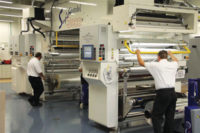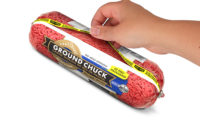In the past, it was not good for packaged meat to be “green,” but in this sustainability-driven era, green is in when it comes to packaging.
One of the key findings from the 2012 Power of Meat Report released this summer was that 28% of shoppers said they would purchase more meat and poultry if packaged using environmentally friendly materials, even if it costs a little more.
However, 49% said they would only purchase more if there was no price difference. Fielded by 210 Analytics (www.210analytics.com), the study was commissioned jointly by the American Meat Institute (AMI) and the Food Marketing Institute (FMI) with sponsorship by Sealed Air’s Cryovac Food Packaging Division.
On the other side of the coin, products perceived as overpackaged can have a negative effect on consumers — and on packagers’ profit margins if they are using more materials than needed. It’s little wonder that meat packagers such as Hormel Foods have focused a great deal of attention on increasing recycling efforts, reducing solid wasteand achieving dramatic source-reduction goals. These components are typically quantified key performance indicators within the environmental portion of a company’s Consumer Social Responsibility program.
Hormel released mid-summer its second set of environmental goals. The company exceeded its packaging-reduction goal of 4 million pounds annually from 2006 to 2011 by reaching 4.4 million pounds per year and a total of 21.8 million pounds. It has set the bar higher, with a new goal to reduce product packaging by 25 million pounds by 2020.
Although corrugated reductions have been a major focus of such programs, even flexible-packaging improvements are targeted. For example, the John Morrell Food Group processing plant in Sioux Falls, S.D., invested in a bagging system that “right-sizes” packaging to the specific product, significantly reducing the amount of material required. This eliminated plastic waste to landfills and resulted in annual savings of $370,000.
Mark Russell, director of business management, West Liberty Foods, identifies two fundamental reasons for source-reduction to continue: “It has a dual benefit of reducing the overall environmental impact of the packaging and reducing cost, thus making the product more affordable for the consumer.”
Russell believes that alternative materials will play a larger role going forward.
“Options for packaging from renewable (plant-based) resources continue to improve, which will begin to replace oil-based plastics,” he adds.
Underscoring the fact that sustainability is a global phenomenon, Australian supermarket chain Coles has been rolling out protein products packaged in high-barrier, corn starch-based trays for pre-packed beef, veal, lamb and sausage products since late 2011. The trays use up to 80% certified-renewable material and are designed to improve the carbon footprint of fresh-food packaging. Coles is the first Australian supermarket to adopt the technology.
Enhanced experience
Another major driver that meat processors are chasing down relates to developments that enhance consumer convenience. A few examples in this market:
- Tool-less package opening via laser-scored or mechanically perforated film;
- Microwaveable, barrier polymer containers that eliminate the need for a consumer-supplied microwaveable bowl or plate;
- Multipacks containing single-serving portions that negate the need to subdivide larger cuts;
- Steam-release venting that bypasses the need for a consumer to remove, cut or otherwise perforate a lidding film for microwave heating.
One company putting a hot new twist on that last technology is Farmland Foods, which is adopting the concept of self-venting to ovenable meat through this summer’s launch of Oven Perfect™ Fresh Pork. The line of marinated, dry-rub seasoned, fresh pork products are ready to cook right in the bag from refrigerator or freezer without defrosting. Consumers remove the easy-peel label and place the bagged pork in the oven. Therevolutionary cook-in-bag locks in juices and flavors and self-vents at the appropriate time to ensure the pork is consistently and perfectly browned. When finished, the bag is easily discarded, minimizing packaging waste and simplifying cleanup.
West Liberty Foods’ line of Peel & Reseal packs introduced a year ago for private-label customers bring the convenience of resealability to trayed meat products. Russell explains that the semi-rigid trays, formed in-line in pack sizes from six to 24 ounces for products from deli meats to IQF products, meet consumers’ need for full reseal functionality while reducing package weight by more than 30%.
“This reseal provides easier access to the product when compared to zipper pouches’ smaller opening,” he adds.
Introduced in August, Jennie-O Turkey Store’s resealable packaging for its reformulated, healthier turkey bacon hits on both convenience and sustainability. According to Brent Koosmann, product manager – retail, resealability in the bacon segment is considered a premium feature.
“Our research found that consumers would be willing to pay more for the convenience,” he notes. The pack eliminates the need for a separate zippered bag and the paperboard insert that is typically used in packaged bacon and would be discarded after use.
Another conveniently green package development announced in 2012: JBS USA adopted an easy-open bag for a number of its premium beef brands to increase product safety by eliminating the need for knives and sharp tools, improve back-of-house efficiencies and reduce product waste in high-end retail and foodservice markets. The packaging is designed to run on existing equipment.




Report Abusive Comment